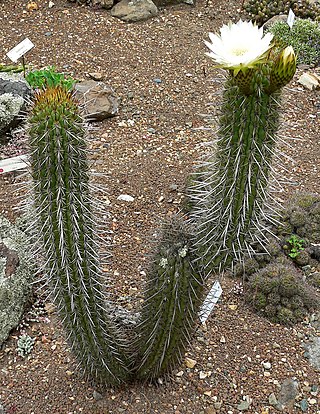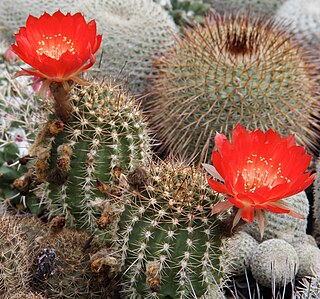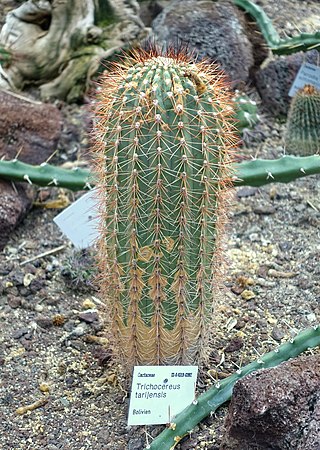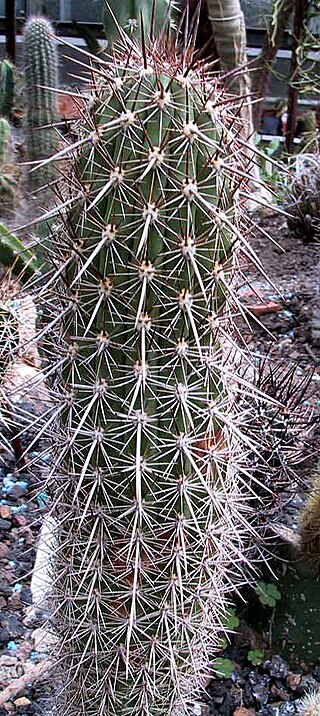
Leucostele chiloensis is a species of cactus native to South America; genus members are known as hedgehog cacti, sea-urchin cactus or Easter lily cactus.

Leucostele atacamensis (cardón) is a species of cactus from Chile, Argentina and Bolivia. The wood of this species can be used in building and in making furniture.

Acanthocalycium thionanthum is a species of Acanthocalycium from Argentina.

Soehrensia formosa, is a species of Echinopsis found in South America. In north-western Argentina, Bolivia and northern Chile. First published in Cactac.: Handb. Kakteenk. 3: 1678 in 1959.

Echinopsis densispina, is a species of Echinopsis found in Argentina.

Lobivia obrepanda, is a species of Lobivia found in Bolivia.

Soehrensia huascha, is a species of Soehrensia in the Cactaceae family, found in north western Argentina. First published in Cactaceae Syst. Init. 29: 5 in 2013.

Lobivia hertrichiana, is a species of Lobivia found in Bolivia and Peru.
Echinopsis chalaensis, is a species of Echinopsis found in Peru.

Echinopsis tacaquirensis, is a species of Echinopsis found in Bolivia.

Soehrensia tarijensis, is a species of Soehrensia, in the cactus family. It is native to Bolivia and northwestern Argentina.

Echinopsis chrysantha, is a species of Echinopsis found in Argentina.

Haageocereus decumbens is a species of Haageocereus found in S. Peru to Chile (Tarapacá)

Leucostele deserticola is a species of cactus native to South America

Leucostele litoralis is a species of Leucostele found in Chile.

Haageocereus platinospinus is a species of Haageocereus found in Peru.

Oreocereus leucotrichus is a species of cactus native to Peru and Chile.
Leucostele tunariensis is a species of columnar cactus native to South America.
Leucostele nigripilis is a species of Leucostele found in Chile.
Leucostele undulosa is a species of Leucostele found in Chile.
















